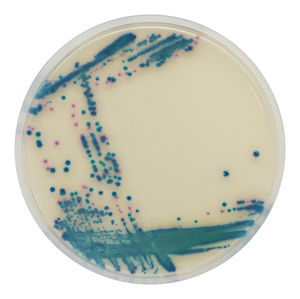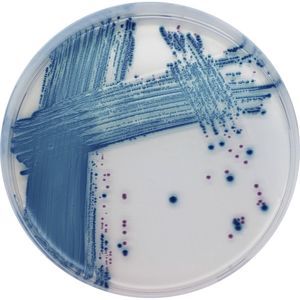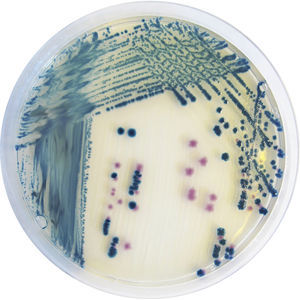
Medium reagent VR952 for microbiologyfor stool samplesfor Enterococcus
Add to favorites
Compare this product
Characteristics
- Type
- reagent medium
- Applications
- for microbiology, for stool samples
- Micro-organism
- for Enterococcus, Enterococcus faecalis
- Method
- chromogenic
- Storage temperature
15 °C, 30 °C
(59 °F, 86 °F)
Description
There are two types of vancomycin resistance in Enterococci. The first type is intrinsic resistance (mostly Van C type but also Van D, Van E, Van F etc) found in E. gallinarum and E. casseliflavus/E. flavescens and demonstrates a low-level resistance to vancomycin. The second type of vancomycin resistance in enterococci is acquired resistance (Van A & Van B types), mostly seen in E. faecium and E. faecalis. Therefore, to avoid the spread of this resistance to more virulent pathogens (S. aureus, for instance) it is crucial to promptly detect the presence of any of these two species in the patient, and accurately differentiate them from other Enterococci.
“Knowledge of the type of resistance is critical for infection control purposes. Van A and Van B genes are transferable and can spread from organism to organism. In contrast, Van C genes are not transferable, have been associated less commonly with serious infections, and have not been associated with outbreaks” – from CDC guidelines
Vancomycin-resistant Enterococcus (VRE) infections are especially aggressive and have been associated with mortality rates approaching 60 % to 70 %.
Intended Use
CHROMagar™ VRE is a selective and differential chromogenic medium, containing 6 mg/L of vancomycin, intended for use in the qualitative direct detection of vanA/vanB transmissible VRE-type gastrointestinal colonization with vancomycin-resistant Enterococcus faecium and Enterococcus faecalis (VRE) to aid in the prevention and control of VRE in healthcare settings. The test is performed with rectal swab and stools from patients to screen for VRE colonization. Results can be interpreted after 24 h of aerobic incubation at 35-37 °C.
Catalogs
No catalogs are available for this product.
See all of CHROMagar‘s catalogsRelated Searches
- Solution reagent kit
- Molecular biology reagent kit
- Diagnostic reagent kit
- Laboratory reagent kit
- Enzyme reagent kit
- Histology reagent kit
- Reagent medium reagent kit
- Bacteria reagent kit
- Blood sample reagent kit
- Clinical reagent kit
- Microbiology reagent kit
- Tissue reagent kit
- Gene reagent kit
- Colorimetric reagent kit
- High-sensitivity reagent kit
- Metal reagent
- Escherichia coli reagent kit
- Powder reagent kit
- Environmental analysis reagent kit
- Fungi reagent kit
*Prices are pre-tax. They exclude delivery charges and customs duties and do not include additional charges for installation or activation options. Prices are indicative only and may vary by country, with changes to the cost of raw materials and exchange rates.














